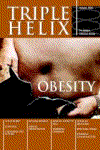The document, Some Issues in Human Sexuality,[1] recently debated in the General Synod, raises important questions about the significance of bisexuality, not least for our understanding of sexual orientation.[2] It claims, for instance, that Ancient Greek and Roman cultures did not have sexual orientation terminology in their language (p219). They viewed people as being simply 'sexual' and capable of expressing their sexuality in a variety of ways.
Sexual Behaviour in Britain, published in 1994, remains the most comprehensive study of national sexual attitudes and lifestyle.[3] The Thatcher government refused to finance this survey and it was rescued by the Wellcome Trust and a welcome report it was. Until then the best data available were found in the Kinsey reports of 1948 and 1953.[4,5] Kinsey claimed that 10% of the population were homosexual, a figure that never rang true in medical experience and the Wellcome report explained why.
Surveying nearly 20,000 randomly selected Britons, the researchers concluded that only 6.1 % of men and 3.4% of women had had any homosexual experience at any stage (p226). These statistics may be an underestimate, given people's reluctance to be honest in these matters, though great care was taken in the research method. It's possible the figures may also have changed in the past ten years, due to changing cultural mores, but presumably not from changes in biological or genetic causes.
The incidence of bisexuality reported by the Wellcome researchers was huge. They concluded that 90.3% of that 6.1% of men, who had had an homosexual experience, had also had a female sexual partner. This would leave 0.6% of men being exclusively homosexual. For women, 95.8% of that 3.4%, who had had an homosexual experience, claimed also to have had a male partner, leaving 0.14% of women being exclusively homosexual (p211). Barely 1% of men and less than 0.25% of women described their sexual experience as either mostly or exclusively homosexual (p183).
The report concluded that exclusively homosexual behaviour is rare (p227). It noted that for many, homosexual experience was youthful and transitory and unlikely to lead to a permanent behaviour pattern (p226), while the high prevalence of bisexual behaviour among homosexuals was well-documented (p211).
A recent article in The Times, written by a lesbian, said: 'Thousands of gay women have had relationships with men and some may not rule out the possibility of falling in love with a man in the future. But asking a gay woman to define herself as lesbian or bisexual is difficult. To opt for what may be the more honest answer of “bisexual” could be viewed as some kind of betrayal, a refusal to stand up and be counted.'
Genetic studies, for all their ambiguity, have ruled out the idea of a gay gene determining orientation.[6] The report before the synod did not mention the significance of twin studies. Identical twins are genetic 'clones' of one another, having an identical genetic make up. If sexual orientation was genetically determined, they would both exhibit the same orientation. But studies have shown that they do not. There may be a genetic or other biological disposition towards homosexual relationships in some people. We do not know for certain. But homosexuality is clearly not genetically determined. We may therefore be mistaken to speak of sexual orientations rather than sexual behaviours.
When we start talking about behaviour, we might then note that some sexual behaviours can be deeply habit forming. While some people seem to move from one type of sexual experience to another, others get addicted in a serious way. For some, use of pornography may come to dominate their lives. A preference for violent pornography may grip their imagination and drive the person to fulfil their desires. Promiscuity, sado-masochism, and the use of prostitutes can all become addictive behaviours.
The chemistry of falling in love is a sort of addiction. It needs to be constantly fuelled to be kept alive. Adultery is addictive. Few people embarking on an adulterous relationship find it is a 'take or leave' matter from which they can easily walk away. They are hooked and get an intense thrill from the encounter. Then there is that powerfully addictive and disturbing preference for sexual intimacy with children. Having engaged in sexual acts with children, paedophiles always remain vulnerable to repeating such behaviour.
We engage in addictive activities at our peril. The question remains: are these sexual obsessions different in kind from so-called 'orientations'? If so, wherein lies the distinction? The media talk about sexual orientation as though it is a natural feature of the individual, both innate and unchangeable, as much a part of the individual as racial origin and skin colour. The conclusion therefore is that it should be sacrosanct in human rights employment laws.[7]
But what if sexual orientation is no different in kind from other sexual fixations? The American Psychiatric Association's Diagnostic and Statistical Manual of Mental Disorders lists 23 different 'paraphilias' as sexual orientations.[8] These include heterosexuality, homosexuality, bisexuality, transsexuality, transvestitism, voyeurism, exhibitionism, paedophilia, and bestiality.
Edward Stein in his important book The Mismeasure of Desire states: 'One of the central claims of this book is that we do not have strong evidence to support the commonly held belief that sexual orientations are natural human kinds.'[9] The language of preference, of learned behaviour patterns and addiction makes much more sense of the known realities of sexual behaviour than talk about orientation. If that is true, it ought to change the whole nature of the public debate.
This is an extended version of an article that originally appeared in the Church of England Newspaper, printed here by kind permission of the editor.
































